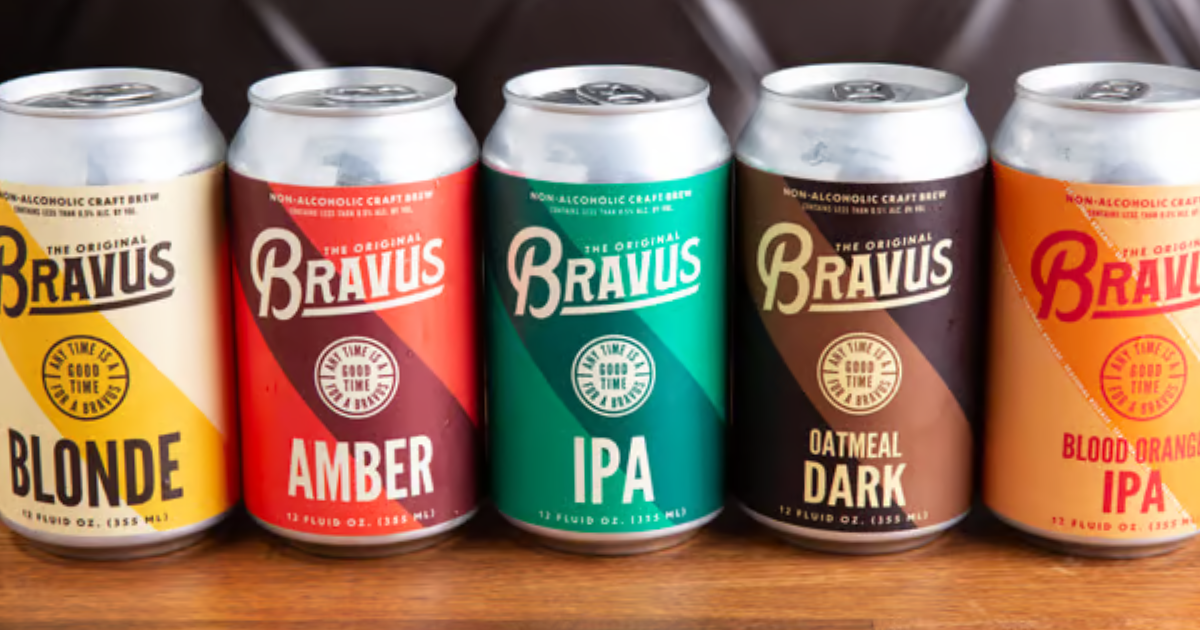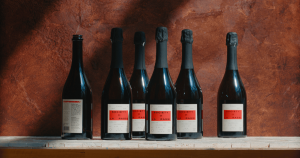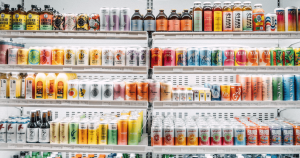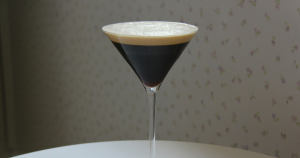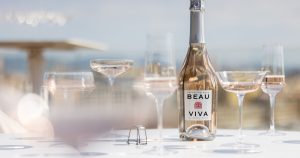Beer, one of the oldest and most popular drinks in the world, has been around since as early as 9500 BC. It started as a natural fermentation process when grains like barley were exposed to wild yeasts. Over time, brewing shifted from being a simple home activity to a major industry. The main ingredients in beer are water, malted barley, hops for flavor, and yeast for fermentation. Different cultures have created many types of beer by varying these ingredients and brewing methods.
Today, beer is a key part of many cultures and social traditions. With advancements in technology, like the steam engine and refrigeration, beer production increased and spread worldwide. Now, we have a huge variety of beers, from common lagers to unique craft brews. This variety reflects not only the evolving tastes of people but also the deep-rooted history and cultural importance of beer.
In recent years, there’s been a surge in the demand for non-alcoholic versions of classic adult drinks, and beer is no exception. But what exactly is non-alcoholic beer? This guide delves into this new category, highlighting its breadth and the best brands to try.
A brief history of beer
Beer’s history is as old as civilization itself, dating back to ancient times. The earliest evidence of beer production dates back to around 5000 BC in what is now Iran, but it is likely that beer was brewed independently in various cultures around the world even earlier. In ancient Mesopotamia, the Sumerians revered Ninkasi, the goddess of brewing, and they left behind a hymn to her that includes a recipe for beer made from barley via bread fermentation, illustrating beer’s integral role in their society.
The brewing of beer spread across ancient civilizations, from Egypt to Europe. In ancient Egypt, beer was a dietary staple and an important part of their daily diet, consumed by both adults and children. It was also used in religious ceremonies. The Greeks and Romans, while favoring wine, also brewed beer, particularly in regions where grape cultivation was difficult.
In medieval Europe, brewing began to evolve from a family activity primarily undertaken by women, known as “alewives,” into a commercial industry. Monasteries played a significant role in this transformation. Monks brewed beer both for their own consumption and as a source of income for their monasteries. During this period, the art of brewing improved, and the variety of beer increased. Hops, which were added to beer for the first time in this era, revolutionized brewing. The new ingredient acted as a preservative, extending beer’s shelf life, and imparted a distinctive flavor that we associate with beer today.
The Industrial Revolution in the 18th and 19th centuries marked a turning point for beer. The invention of machines like the steam engine allowed for larger-scale production and distribution. The development of refrigeration and pasteurization in the 19th century further extended the life of beer and improved its quality. These technological advancements led to the birth of the modern beer industry, characterized by mass production and global brands.
In recent decades, there has been a resurgence in craft and artisanal brewing, harking back to the varied and personalized brewing traditions of the past. This movement has introduced a new generation of beer enthusiasts to a vast array of flavors, styles, and brewing techniques, emphasizing quality and diversity over mass production. The history of beer is not only a reflection of technological and industrial advancements but also a mirror to the cultural and societal changes throughout human history.
Common styles of beer
Broadly speaking, the vast majority of beers are either lagers or ales (Kolsch beers and California Steam beers blur the line.)
Within those larger categories, there are many sub-categories. The following categories are neither mutually exclusive nor collectively exhaustive but they do represent a directionally correct primer on the most common styles of beer today.
Lager
Lagers use bottom-fermenting yeast (Saccharomyces pastorianus), which works at colder temperatures and usually results in a cleaner, crisper beer with a more subdued flavor profile compared to ales.
Ale
Ales are brewed with top-fermenting yeast (Saccharomyces cerevisiae), which operates at warmer temperatures and tends to produce a variety of esters and other secondary flavors and aromas, often resulting in a beer with a more complex taste.
IPA
India Pale Ales (IPAs) are a popular style of ale known for their stronger hop bitterness, floral or citrusy aroma, and sometimes higher alcohol content. Originally brewed in England with extra hops to survive the long voyage to India, IPAs have evolved into a diverse style with many sub-varieties, including American, English, and New England IPAs.
Pilsner
Pilsners are a type of pale lager that originated in the Czech city of Pilsen, known for their clear, golden color and crisp, refreshing taste. They are characterized by a balanced flavor with a light, malty sweetness, and a noticeable hop bitterness, often featuring Saaz, a traditional Czech hop.
Porter
Porters are a dark, robust style of beer that originated in London in the 18th century, known for their rich, malty flavor with notes of chocolate, coffee, and caramel. They are typically smoother and less intense than stouts, offering a medium body with a hint of sweetness balanced by a mild bitterness.
Stout
Stouts are a dark, full-bodied beer style that evolved from porters. They are characterized by their rich, roasted flavors that often include notes of coffee, chocolate, and caramel. Known for their creamy texture and deep, ebony color, stouts can range from dry Irish stouts to sweet milk stouts and robust imperial stouts with high alcohol content.
Sour
The production of sour beers often involves wild yeast strains and bacteria, such as Lactobacillus, Pediococcus, and Brettanomyces, which contribute to the beer’s sour flavor. Modern brewers may also intentionally add acids or other souring agents to achieve a similar effect. Sours include Lambic, Gose, and Berliner Weisse, among others.
Wheat
Wheat beer, often cloudy and light in color, is brewed with a significant amount of wheat alongside barley, giving it a smooth, creamy mouthfeel and a refreshingly light flavor. Known for its characteristic notes of banana, clove, and sometimes citrus, wheat beer includes popular styles like the German Hefeweizen and Belgian Witbier, making it a favored choice for its distinctive and approachable taste.
What is non-alcoholic beer?
Modern day drinkers are often surprised to learn what large quantities of beer were consumed by previous generations and how common it was historically for even children to drink beer. A bit of additional context is helpful here, as much of the beer consumed historically was actually much lower in alcohol content than even “light” modern beers. Consider also that, for many ancient drinkers, beer’s alcohol content wasn’t even necessarily a desirable feature beyond its ability to indicate that the liquid was safe to drink.
Small beer refers to a low-alcohol beer that was traditionally brewed as a safer alternative to drinking water, which could be contaminated. Historically, it was made from the second or third runnings of a mash in brewing. This process resulted in a less alcoholic, lightly flavored beverage that was commonly consumed by all members of society—including children—in medieval Europe and colonial America due to its safer and more hygienic nature compared to often polluted water sources. Small beer was a staple of daily life, providing a minor nutritional value and hydration without the intoxicating effects of stronger beers, wines, etc.
Depending on the place, “non-alcoholic beer” is often actually an oxymoron, as many regulating bodies define beer by a specific alcohol by volume (ABV) range, e.g., greater than 2.5% ABV. Setting aside those technicalities, non-alcoholic beer is a type of beer that contains very little to no alcohol, typically less than 0.5% ABV, although the exact thresholds vary from place to place.
It is brewed similarly to regular beer—with water, hops, yeast, and grains—but undergoes a process to remove or reduce the alcohol content, such as vacuum distillation, reverse osmosis, or limited fermentation. Non-alcoholic beer offers an alternative for those who wish to enjoy the taste of beer without the effects of alcohol, catering to health-conscious consumers, designated drivers, and others who abstain from alcohol for various reasons. With advancements in brewing technology, non-alcoholic beers have significantly improved in flavor and variety, closely mimicking the taste profiles of their alcoholic counterparts.
How is non-alcoholic beer made?
The aim of beer de-alcoholization processes is to extract the alcohol while retaining as much of the original flavor, aroma, and characteristics of the beer as possible. There are a few common methods:
Limited or arrested fermentation
By controlling the fermentation process, brewers can limit the amount of alcohol that is produced. This might involve using less yeast or fermenting at lower temperatures.
Reverse osmosis
This method filters the beer through a membrane to remove alcohol.
Vacuum distillation
More commonly used in de-alcoholizing wines, this process involves heating the beer within a vacuum, which allows the alcohol to be boiled off at a lower temperature, minimizing the impact on the beer’s flavor.
Choosing the best non-alcoholic beer
Choosing the best non-alcoholic beer depends on individual preferences, the occasion, and what you’re looking for. Here are some steps and considerations to guide you:
Taste test
Luckily for the aspiring connoisseur, great non-alc beers are now available at most good restaurants and bars. No longer is O’Douls your only option! Even if you don’t see non-alc beers on the menu, ask your bartender or waiter. There is often at least one great non-alc beer off menu.
You can also attend tastings at your local non-alc bottle shop or purchase variety packs. Just as with alcoholic beers, personal preference plays a significant role. What resonates with one individual might not be a hit with another, so sampling a few varieties can help you pinpoint your favorite.
Read reviews
These can give you insights into taste, aroma, and overall quality. Remember that beer, even non-alcoholic, is subjective. What one person loves, another might dislike.
Trust your palate
Ultimately, the best non-alcoholic beer is the one you enjoy most. Trust your taste buds and don’t be swayed solely by price or popular opinion.
As the demand for non-alcoholic beverages grows, the quality and variety of non-alcoholic beers on the market are increasing. With a bit of exploration, you’re likely to find bottles and cans that satisfy your cravings and complement your occasions. Don’t stop exploring though, since new non-alc beers are being released all the time!
The best non-alcoholic beers: a comparison
Here are four of the best booze-free brew ranges I’ve tried, plus one non-beer bonus pick.
Eighteen Twenty Brewing Co
A newcomer, Eighteen Twenty Brewing Co. from Maine is quickly making a name for itself with non-alcoholic craft beers that maintain the rich flavors and quality typical of traditional craft beer. Their range of authentic, flavorful non-alcoholic beers is one of the strongest overall I’ve seen of late.
Gruvi
Gruvi’s non-alcoholic beers offer a rich variety of flavors indicative of each particular style of beer, from piney hops to notes of banana, citrus, and chocolate. Each variety is crafted to closely mimic its alcoholic counterparts, providing a full-bodied, flavorful experience for those seeking non-alcoholic options. I’m partial to their Mocha Nitro Stout.
Bravus
Bravus Brewing Co. calls itself North America’s first non-alcoholic craft brewery and we’re not going to argue with them! Each brew in their range is crafted to provide a rich, authentic beer experience without the alcohol, appealing to both craft beer aficionados and mindful drinkers alike. Like Gruvi, their dark beers especially are not to be missed.
Brewdog
The only beer on this list that also brews alcoholic beer, BrewDog is quickly becoming even better known for their non-alc beers. Their brewing process is designed to ensure that these non-alcoholic options don’t compromise on taste, appealing to both traditional beer enthusiasts and those who prefer alcohol-free alternatives. They’re also beginning to branch into ready-to-drink cocktails and I can’t wait to try their Lone Wolf non-alc G&T.
HOP WTR
Not fermented; not a beer! Sparkling hops waters like HOP WTR offer a refreshing alternative for people who love the taste of hops but don’t necessarily want a beer right now. I love non-alc beers and drink a lot of them, but a HOP WTR every now and then is a refreshing change of pace.
FAQs about non-alcoholic beer
Why would anyone drink non-alcoholic beer?
There are several reasons why someone might opt for a booze-free brew:
- Mindful Drinking: Many want to reduce their alcohol intake without sacrificing social experiences or the pleasure of savoring a fine India Pale Ale.
- Health Reasons: Some individuals abstain from alcohol due to medications, health conditions, or personal wellness goals.
- Safety: Non-alcoholic options allow one to enjoy a sophisticated adult drink without impairing their ability to drive or perform other tasks.
- It’s nice to hold a drink in your hand.
Does non-alcoholic beer taste like regular beer?
The authenticity of the taste of non-alcoholic beer compared to regular beer has improved significantly in recent years. Advanced brewing and de-alcoholizing techniques, as well as better understanding of flavor compounds, have allowed brewers to create non-alcoholic beers that more closely mimic the taste of their alcoholic counterparts.
However, the perception of taste can be subjective, and some differences often remain, primarily due to the absence of alcohol, which can affect mouthfeel and flavor complexity. The range and quality vary among brands and styles, with some achieving near-identical flavors to traditional beers, making them appealing to casual beer drinkers and connoisseurs alike.
Is non-alcoholic beer completely free of alcohol?
In the US, beers must contain less than 0.5% alcohol in order to be called non-alcoholic. Some (but not all) of those are alcohol-free, which means they contain less than 0.05% alcohol. Be sure to read the fine print on each can to understand each different brew’s unique alcohol content.
Can pregnant women drink non-alcoholic beer?
Among pregnant women who choose to drink non-alcoholic beer, many would say that non-alcoholic beer contains little to nothing potentially harmful to their unborn child.
That said, some non-alcoholic beers contain functional ingredients like CBD, etc. that may not be advisable for pregnant women.
It’s important that those who are pregnant consult with their healthcare providers regarding nutrition and health questions like these.
Is non-alcoholic beer gluten-free?
Not always. Some non-alcoholic beers are gluten-free, and some gluten-free beers are non-alcoholic. One common non-alcoholic beer that’s also gluten-removed is Athletic’s Upside Dawn.
Can you get drunk on non-alcoholic beer?
It would be very difficult if not impossible to become intoxicated by drinking only non-alcoholic beer.
If non-alc beers contain approximately 1/10th the alcohol of their traditional beer counterparts, one would have to drink approximately ten times the volume of liquid vs. alcoholic beer in order to become intoxicated.
Complicating matters further, the body metabolizes alcohol over time. At alcohol quantities as low as those in non-alc beer, the body is metabolizing alcohol almost as fast as it’s being consumed. If one wanted to overcome these obstacles, one would have to very quickly drink a very large amount of non-alc beer.
Our friends at Thrillist attempted to get drunk on non-alc beer in the name of science. After six 0.5% ABV beers, the author reported, “I’m sober, but it feels like I’ve just eaten an entire f*cking large pizza by myself.“ Don’t do this to yourself. Or do. We’re not your mom.
Adding mathematical precision to the conversation, Chrystabelle from OneClubSober calculates that a 160 pound man would need to drink forty (40!) 12 oz non-alc beers in under 6 minutes in order to become legally intoxicated. So unless you’re Eric “Badlands” Booker, it’s not possible to get drunk on non-alcoholic beer.
How many calories are in non-alcoholic beer?
It varies by product, but non-alcoholic beers have between ⅓ and ½ the calories of their alcoholic counterparts. The calorie content in beer primarily comes from two sources: the alcohol itself and the residual sugars. Since non-alcoholic beers have little to no alcohol, they usually contain fewer calories.
What are the health benefits of non-alcoholic beer?
Without alcohol, these brews reduce the risk of impaired judgment, liver issues, and addiction associated with alcohol consumption. Additionally, they often contain fewer calories than their alcoholic counterparts, supporting those mindful of their caloric intake. As with any beverage, moderation is key, but non-alcoholic beers present a healthier alternative for beer fans.
For more from Douglas, connect with him on LinkedIn.


